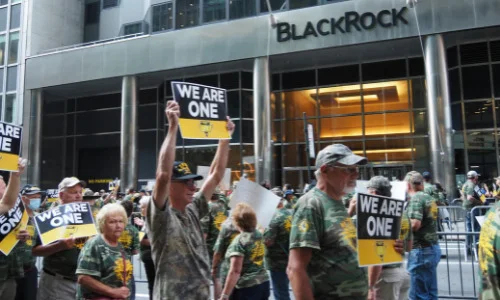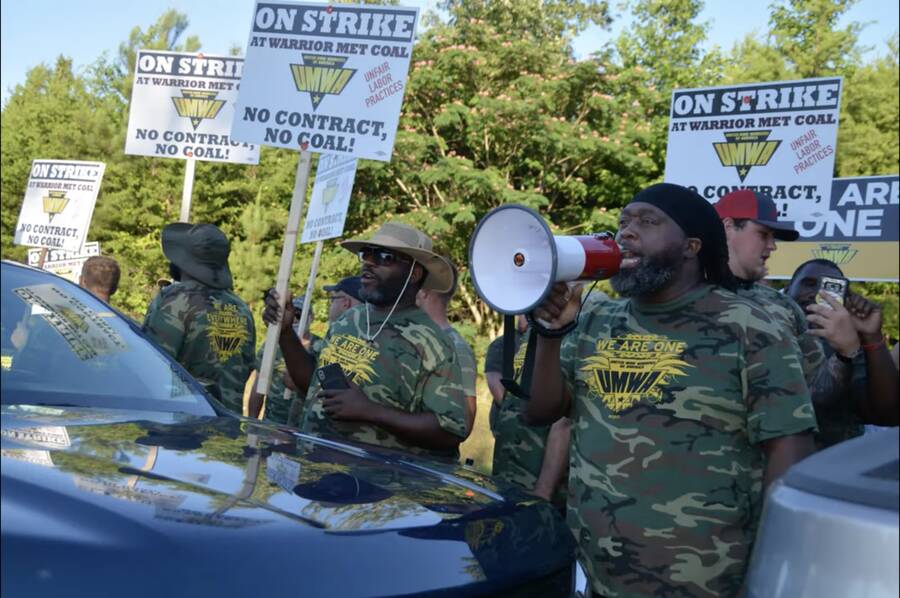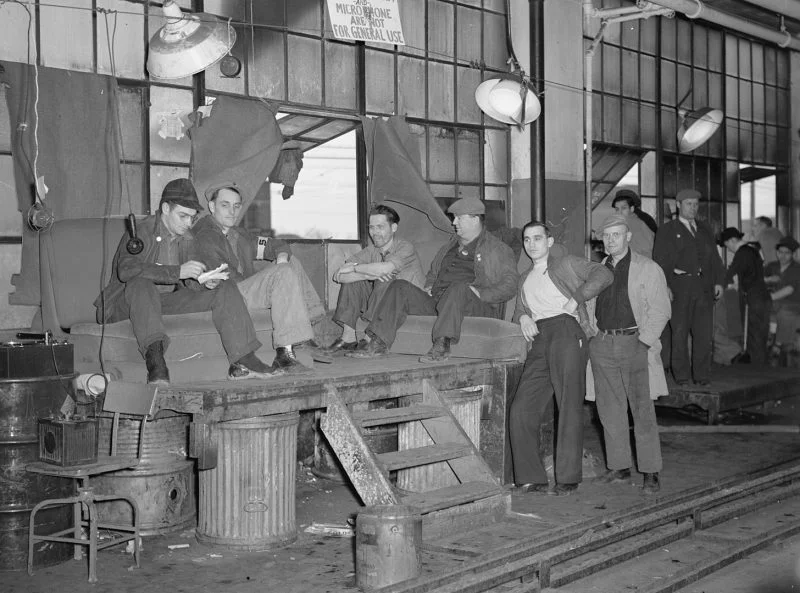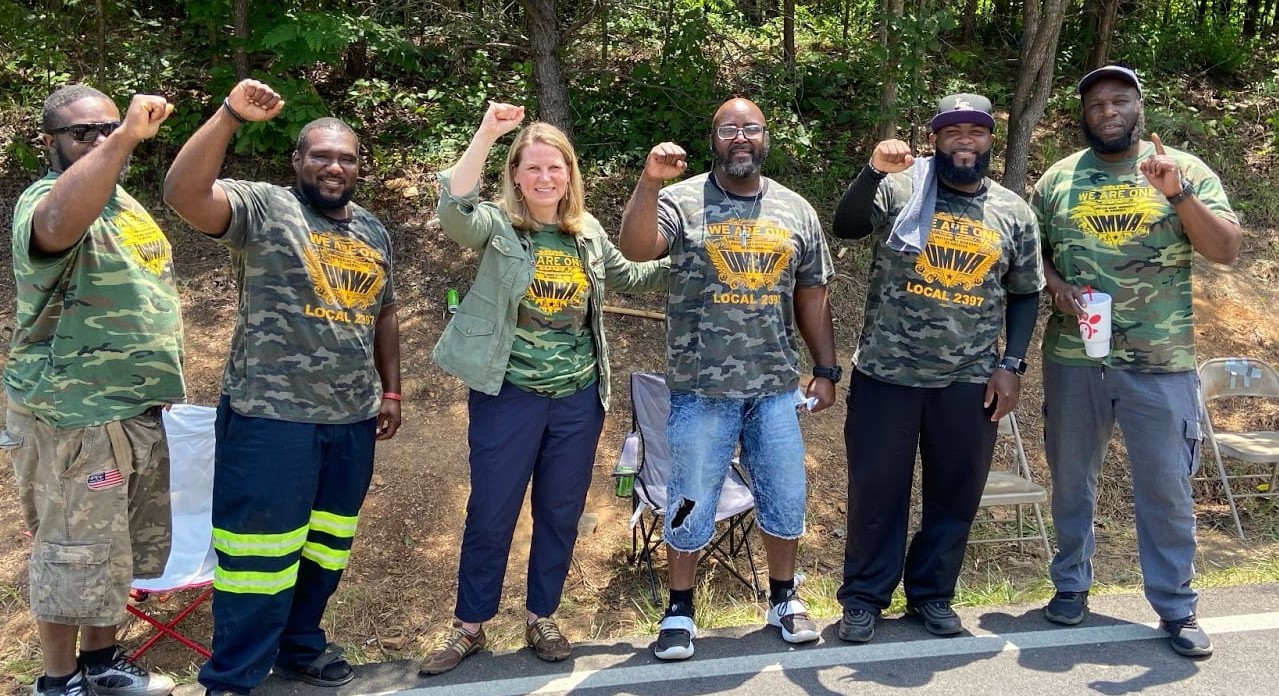When the workers of Warrior Met Coal downed tools on April 1, 2021, they didn’t realize they were launching the longest miners’ strike in US history. But these miners had every reason to prepare for a serious fight, and they held their picket line for over 600 bitter days—until the union leadership threw in the towel. Just shy of the strike’s two-year anniversary, president Cecil Roberts of the United Mine Workers of America (UMWA) submitted an “unconditional offer to return to work.” He justified the surrender by arguing that the strike was at an impasse.
“We are entering a new phase of our efforts to win our members and their families the fair and decent contract they need and deserve,” Roberts said. “We have been locked into this struggle for 23 months now, and nothing has materially changed. The two sides have essentially fought each other to a draw thus far, despite the company’s unlawful bargaining posture the entire time.”
Despite the bluster about “entering a new phase,” this represents a defeat. When striking workers return to their jobs without achieving their aims, it cannot be considered a “draw.” But this outcome was far from inevitable. The question is, how did the miners end up here and what could have been done differently? This experience deserves serious study by working-class militants and socialists, as it is rich in lessons to be learned and applied to ensure the class battles of the future lead to victory.
An extremely justified strike
Warrior Met Coal, Inc. operates some of the world’s deepest vertical shaft coal mines to produce metallurgical coal, a basic component used in steel production, which the company exports to Asia, Europe, and South America. The mines were owned by Walter Energy until 2015, when the owners filed bankruptcy. The company was scooped up by BlackRock and other Wall Street private equity firms. True to brutal form for finance capital, these vultures wasted no time in stripping the benefits, pensions, and contracts of nearly 3,000 miners and their dependents.
 BlackRock immediately made deep cuts to workers pay and benefits while simultaneously increasing compensation for management / Image: UMWA
BlackRock immediately made deep cuts to workers pay and benefits while simultaneously increasing compensation for management / Image: UMWA
Over the course of the “restructuring,” the company forced the workers to fork over $1.1 billion in wages, healthcare, overtime, and other benefits. What was already a toxic, life-threatening job became even more grueling. With the termination of their collective-bargaining agreement, workers with lungs scarred from breathing coal dust and noxious fumes lost their healthcare coverage. Health insurance deductibles for miners’ families shot up from less than $30 to $1,500 a month, with co-pays of $250 for doctor visits. The company explained that the workers would have to accept these concessions in order to “help the company emerge fully solvent from bankruptcy.” The “job-saving,” “belt-tightening” agreement also included a 20% pay cut.
Meanwhile, the same CEO who presided over Walter Energy’s demise was not only not terminated, but was instated as head of the new company and given a generous raise. As of 2021, his compensation package totaled $5.6 million. Since the new company went public in April of 2017, it has paid investors more than $4 billion in dividends and stock buybacks while offering bonuses of up to $35,000 to top managers.
In 2021, as the terms of the 2016 contract came to an end, new negotiations began. Predictably, Warrior Met offered a package that was “both competitive and meant to protect jobs at the mines.” Translated into plain language, this meant offering no increase in benefits and a measly $1.50 per hour raise over five years, far from recovering the pay cut from 2016. Through crocodile tears, the bosses explained that they couldn’t raise wages back to 2015 levels because of an operating loss of close to $40 million for 2020 and the first quarter of 2021. They conveniently neglected to mention the $302 million in net income for 2019.
This was one slap in the face too many. By a margin of 99.96%, the workers voted to reject the company’s offer and to defend their living standards and dignity. The strike began.
The bosses make the laws
Every worker knows that a company’s bottom line can only be hurt by shutting down production. This means class war. For the Alabama miners, this was a hard lesson learned through bitter experience on the front lines of the class struggle.
As soon as workers had set up pickets at 12 different coal-pit entrances, the company organized a steady supply of scabs to cross these lines, sometimes by the busload. By law, the picketers were allowed to march, but were not permitted to block the scab vehicles from entering and keeping the mine running. In other words, the workers could slow down the entry of the scabs, but the picket line was to be “porous” at all times. In effect, this makes an effective strike picket illegal. This is just one of the many ways that the capitalists use their legal system as an instrument in the class war.
Knowing they had the law, management, and police on their side, the scabs were emboldened. Time and again, they rammed violently into the workers on the picket line, committing vehicular assault and forcing them to leap out of the way or risk ending up in the hospital. Eventually enough was enough. The workers began to retaliate in self-defense, slamming their wooden picket signs against the scab vehicles that were trying to run them over. In desperation, some strikers even resorted to throwing bricks through windshields as the scabs rammed through crowds of workers.
 By law, the picketers were allowed to march, but were not permitted to block the scab vehicles from entering and keeping the mine running / Image: UMWA
By law, the picketers were allowed to march, but were not permitted to block the scab vehicles from entering and keeping the mine running / Image: UMWA
The company responded with the full force of the law, with a circuit judge issuing a restraining order barring picket activity at the mine entrances. Picket lines “or other activity” by striking workers were prohibited within 300 yards of all entrances. The injunction barred workers “in any manner [from] interfering with, hindering or obstructing, by threats, intimidation, or acts of violence, the conduct and operation of Warrior’s business and supporting activities.” For good measure, law enforcement began escorting scabs, and management sought to fire 40 striking workers, including most of the leading union members on the picket line. This effectively illegalized the main purpose of the strike—to paralyze the mines.
What did the local circuit of the National Labor Relations Board (NLRB) do in the face of this egregious attempt to curtail the most basic of workers’ rights? They backed the company’s attacks wholesale, and ordered the union to compensate Warrior Met for an absurd list of itemized claims, from property damage and the cost of increased surveillance, to profit losses incurred directly by the strike. In other words, the workers were even forced to pay the company for unmined coal. The NLRB ratified all the company’s claims, and presented the union with a bill of $13.3 million dollars.
This shows the real face of the NLRB, despite the labor leaders’ attempts to portray it as a “safeguard” for union rights. Incredibly, UMWA President Roberts signed a letter in December calling for more funding for the NLRB. In the end, the absurd $13.3 million fee was revised to a more “reasonable” $435,000, a move hailed by Roberts so as to “put this behind us and negotiate.”
But by signing away its right to picket, the union effectively surrendered the only leverage it had in the “negotiations.” The stream of scabs was now free to run the mines just as before, and it was business as usual for the bosses. Net income for the first three quarters of 2022 was reported at $541.6 million. This is what “playing by the rules” of the bourgeois legal system leads to.
What a class-war response would have looked like
The Warrior Met miners were confronted not only by the managers and scabs who taunted their picket lines, the cops who enforced the bosses’ will, and the local politicians from both parties who sided with the company against the strikers. They were also up against the fund managers on Wall Street who mocked them from the comfort of their Manhattan boardrooms. In other words, they were locked in a one-sided class war against the representatives and attack dogs of the capitalist class as a whole. A contingent of miners actually bused from Alabama to New York City to protest in front of the Wall Street offices of BlackRock. But the executives simply watched from their windows, shrugged their shoulders, and continued watching the profits roll in on their $9.5 trillion portfolio.
Despite their heroic efforts, there was no way these workers alone could defeat the forces arrayed against them. As long as the strike was kept within the narrow confines of the status quo, the bosses could rest easy in the knowledge that the system would do its job. It was only a matter of time before the workers’ resistance would be worn down. And that’s exactly what happened. But there was another way.
The great sit-down strikes of the ‘30s and ‘40s laid the foundations for the American labor movement. The UMWA itself was formed on the basis of illegal strike action by hundreds of thousands of workers in the earlier half of the 20th century. Not only were those strikes illegal, unions themselves were illegal. That didn’t stop millions of workers from taking collective action to secure union rights in practice. They understood the spirit of the old slogan of the British labor movement: “Better to break the law than break the poor!”
 The workers that participated in the sit down strikes of the 30’s and 40’s set a heroic example for workers today / Image: Library of Congress
The workers that participated in the sit down strikes of the 30’s and 40’s set a heroic example for workers today / Image: Library of Congress
Serious class battles are no joke. They require serious preparation, mass mobilization, and class-wide solidarity. A handful of workers on a picket line cannot defy the bosses, scabs, police, and judges on their own. But a mass rally of thousands of workers is another question.
The Warrior Met miners were fighting some of the wealthiest, most hated hedge funds in the world. Theirs was a struggle that would have inspired the solidarity of millions of workers and youth across the country. What was needed was a militant, class-struggle appeal for solidarity and a mobilization campaign linking the miners’ battle with the fight against Amazon, Starbucks, raising demands that would connect with all workers in all industries.
Had this been done, the miners’ isolated fight for better wages at the expense of Wall Street profits could have been transformed into a class-wide fight for higher wages and better conditions for all workers. In today’s context of rampant inflation, this would have gotten a big echo. After all, BlackRock and the rest of Wall Street have made trillions at the expense of the working class. The wealth of the wealthiest 1% in the US has grown by $12.5 trillion since 2009.
The miners could have issued an appeal for a nationwide labor mobilization against BlackRock and the rest of the Fortune 500, calling for the expropriation of these monopolies, to be operated in the public interest under workers’ control. This could have been linked to the need for a class-independent workers’ party and an immediate break from the rotten two-party monopoly that dominates American politics today. Unfortunately, not a single national labor or left leader has this perspective, and no such appeals or mobilizations were forthcoming.
The lesson from Alabama is clear: only class-struggle trade unionism can turn the tide against the bosses. Only militant class solidarity—in defiance of the laws that bind workers’ hands—can raise impermeable pickets that keep out scabs and shut down production.
The strength of the working class lies in its potential for mass collective action. Harnessing that vast power starts with an uncompromising class perspective—a Marxist perspective. It’s no accident that the victorious strikes of the ‘30s and ‘40s were led by communists. Their outlook was shaped by a burning confidence in the workers’ capacity to transform society and end exploitation once and for all. That is the kind of leadership required for the class battles of our time.

